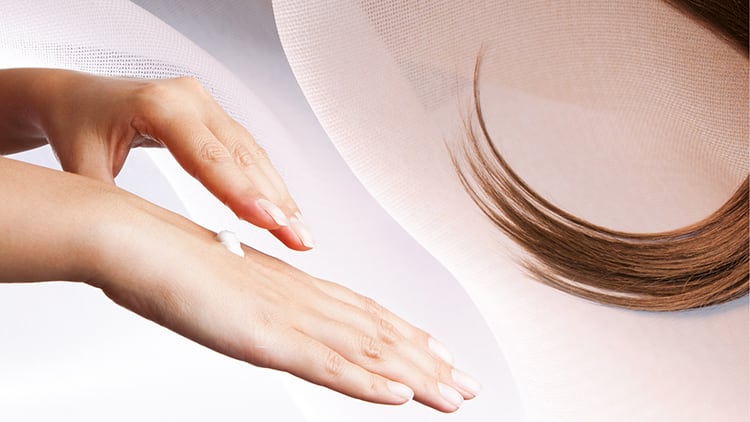Advances in industrialization over the last 100 years, associated with the increased density of the population living in urban areas resulted in a huge increase in the emission of toxic chemicals into the environment. The harmful effects of progress translate into air, water and soil pollution that represent a global threat to the planet, and are treated as such by world authorities.
Heavy metals are one of the different classes of pollutants, and pose a high risk, not only to humans, but to all living beings. Although a large number of these metals such as iron, copper, zinc, chromium and even arsenic are essential micronutrients, they can become potentially toxic at higher concentrations. Moreover, some non-essential micronutrients such as cadmium, mercury and lead are highly toxic even at slight concentrations.
Different biological materials interact with each pollutant in a specific way. Hair, for example, absorbs very effectively different chemicals present in the environment and is considered to be one of the most efficient substrates for pollution monitoring by environmental scientists and forensic experts. Human hair analysis plays such a vital role in the global monitoring of pollution that the Global Environmental Monitoring System (GEMS) of the United Nations Environment Program selected human hair as one of the most important monitoring biomaterials. Therefore, the identification and quantification of heavy metals (Cr, As, Cd and Pb) in human hair is essential to assess environmental contamination and could be used to encourage people to maintain healthier lifestyles in their environments.

Molecules of non-biological origin found in follicles or hair fibers can originate either from absorption from the bloodstream or from tissue neighboring the follicles, as well as from direct adsorption by the fibers. Besides heavy metals, a variety of agricultural pesticides such as organophosphates and organochlorines, for example, were detected in human hair. The consequences of the adsorption of these pollutants on hair range from milder effects, such as a reduction in glossiness and moisture, to more severe effects such as chemical damage through attached toxic and oxidizing pollutants penetrating inside the hair.
Although air pollution is the one that calls our attention the most, water contamination is also a serious problem. Even tap water contains dissolved metals that will be adsorbed by hair during a simple bath. According to the World Health Organization, the copper content in drinking water can be up to 2 ppm. Virgin hair, once repeatedly exposed to tap water containing 2 ppm of copper, can accumulate up to 20 ppm of copper, but if the hair is already damaged its adsorptive capacity increases 100 times!
Recent research on hair science has demonstrated that heavy metals such as copper, once adsorbed onto hair fibers and in contact with strong oxidants, such as hydrogen peroxide, catalyze the formation of free radicals (Fenton reaction) that destroy the cuticle and exposes the hair fiber to further damage. Additionally, researchers have found that hair loss can be caused by pollution and can coexist or mimic androgenic alopecia just like diffuse unpatterned hair loss, diffuse alopecia areata, early cicatricial alopecia or chronic telogen effluvium can mimic androgenic alopecia.
When it comes to hair treatments such as bleaching, lightening or dyeing, the presence of heavy metals in the hair fiber might cause irreversible damage. Oxidative treatments with hydrogen peroxide in alkaline medium can induce innumerable other chemical transformations, besides oxidation of proteins and, consequently, alter the physical-chemical and biological properties of hair fibers, inducing a low tensile strength, increased porosity and an unpleasant sensory.
All things considered, it is therefore important to create products that prevent the presence of these metals and/or remove metals already adsorbed on the fibers.

Molecules capable of forming stable complexes with metals or of reducing metal ions are good candidates for the task, especially molecules of natural origin. Polyphenols with metal chelating activity can help in capturing, cleansing and removing the heavy metals found on the surface of the hair by reacting with metal ions to form a stable, water-soluble complex.
Flavonoids, a well-known class of molecules found in fruits, flowers and other plant parts are effective metal chelators. Flavonoids with six hydroxyl groups such as Quercetin, Taxifolin and Catechin can reduce copper ions more efficiently than flavonoids containing five hydroxyls, but Flavones with four hydroxyl groups such as Luteolin and Kaempherol exhibit the same Cu2+ reducing potency.
Besides Flavonoids, several biopolymers are reported to be good biossorbtive materials, and have been studied as metals sequestrants in the treatment of industrial wastes, for example.
Studies have shown that biopolymers from algae can accumulate heavy metals to concentrations several orders of magnitude higher than in the surrounding medium. Biopolymers such as chitosan, carboxymethyl cellulose, alginate and lignin have been extensively used for the cosmetic industry because they are biodegradable, bio-compatible, and non-toxic. Toxic metals can be efficiently absorbed by crosslinkers, distributed in aqueous solutions of divalent heavy metal ions to examine their polymer absorption capacity.
To face the challenges of an increasingly polluted environment, products with the ability to prevent or remove contaminants that are harmful to the health of the skin and hair will increasingly occupy the attention of brands and formulators.




